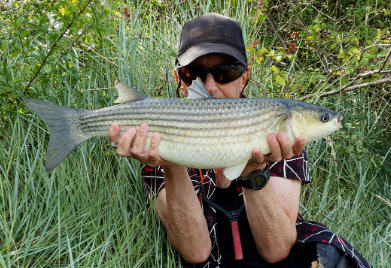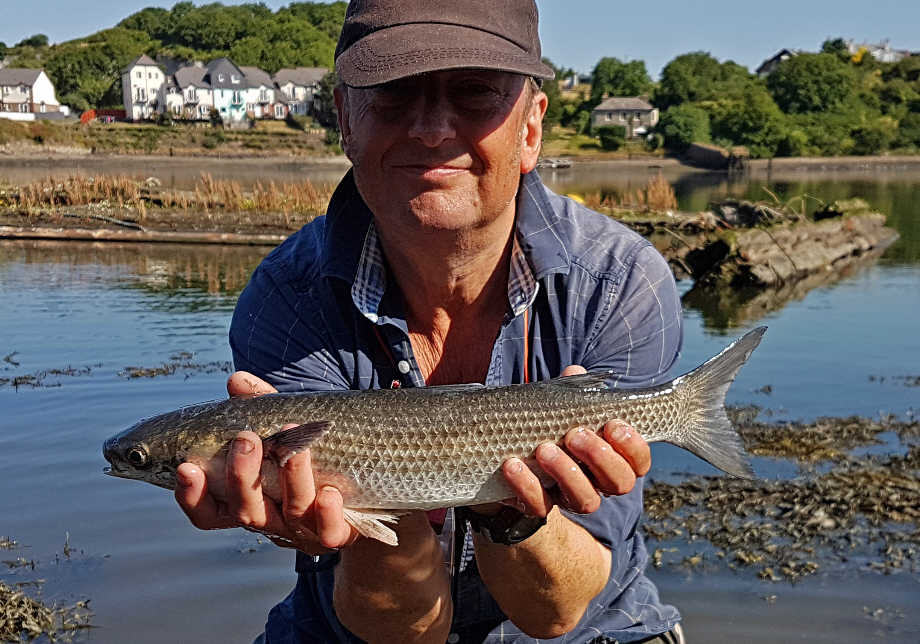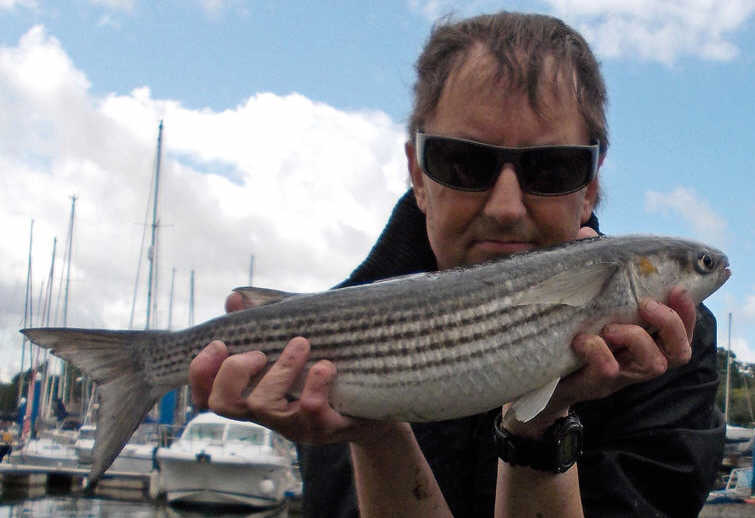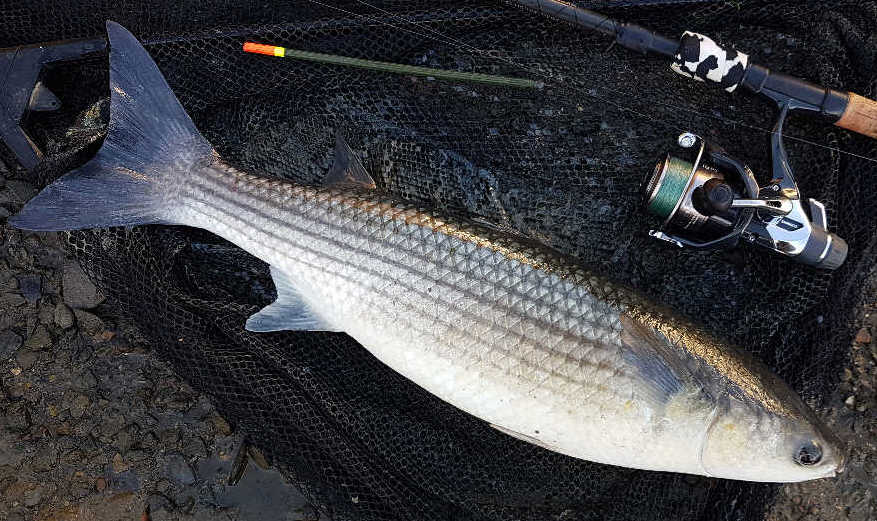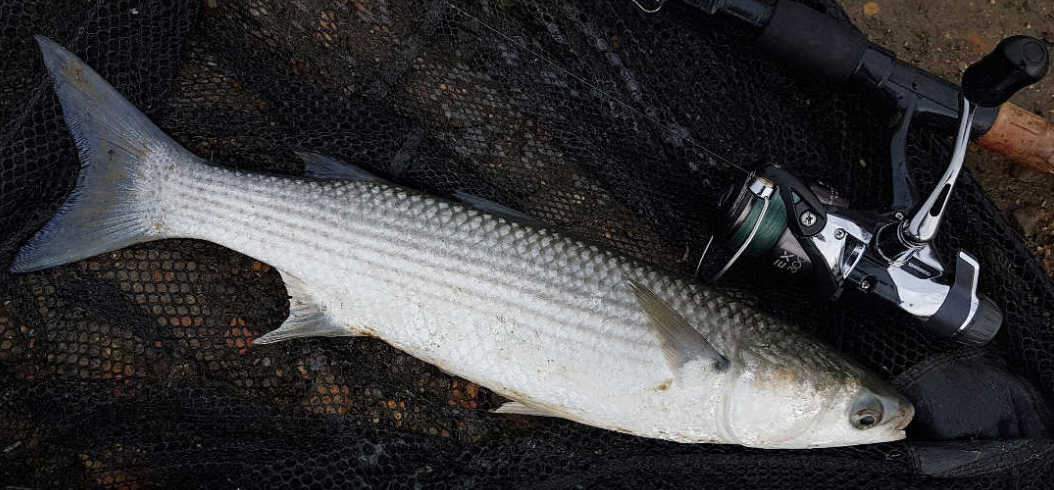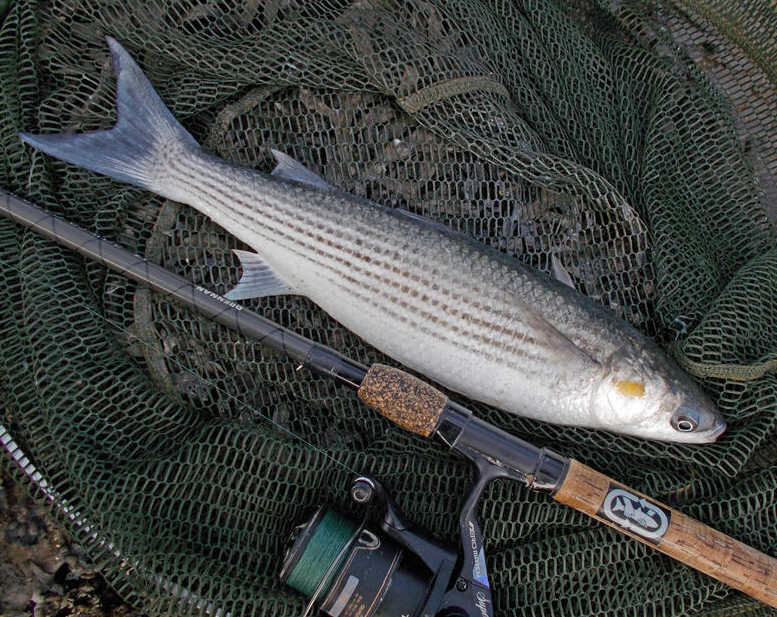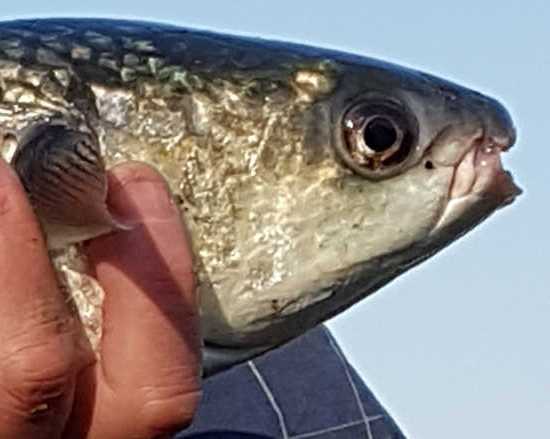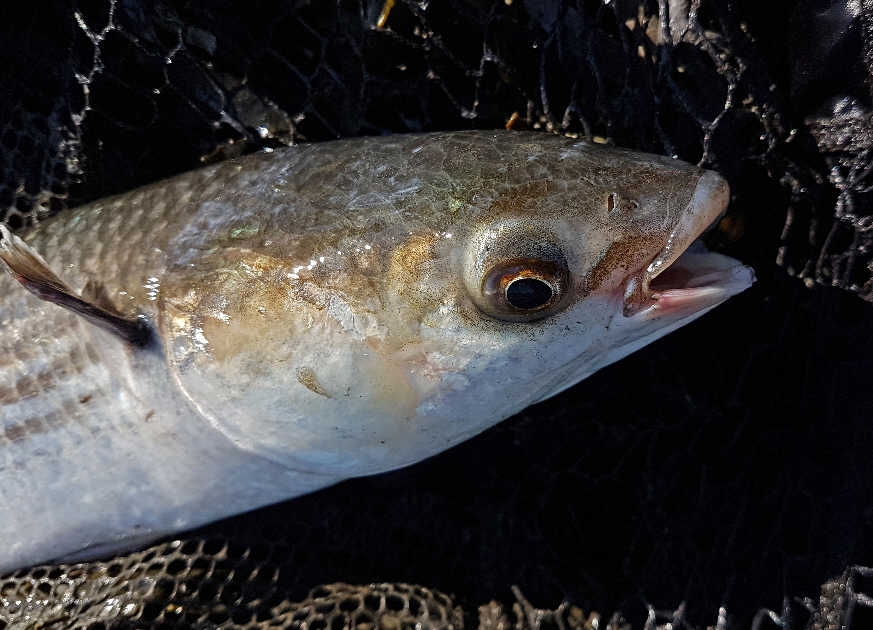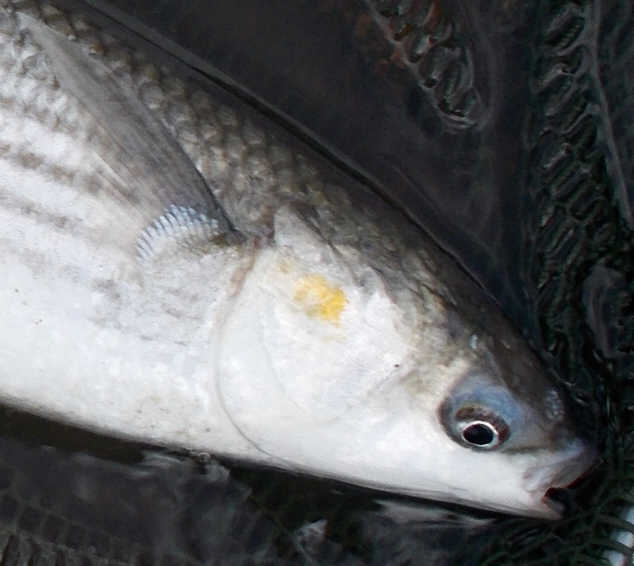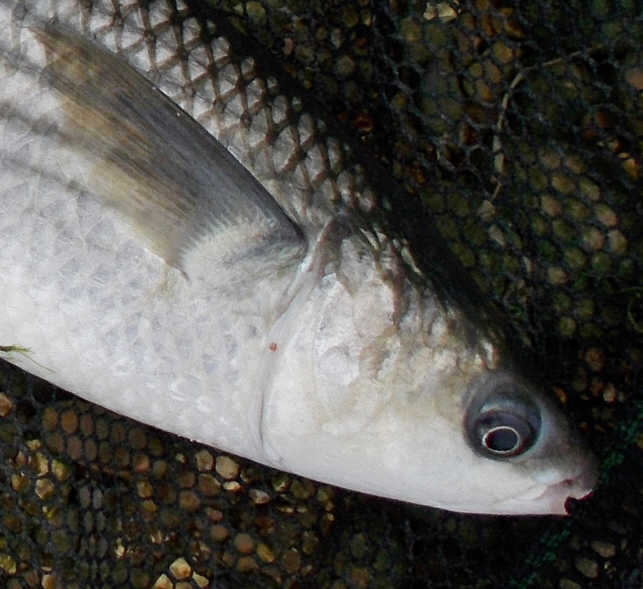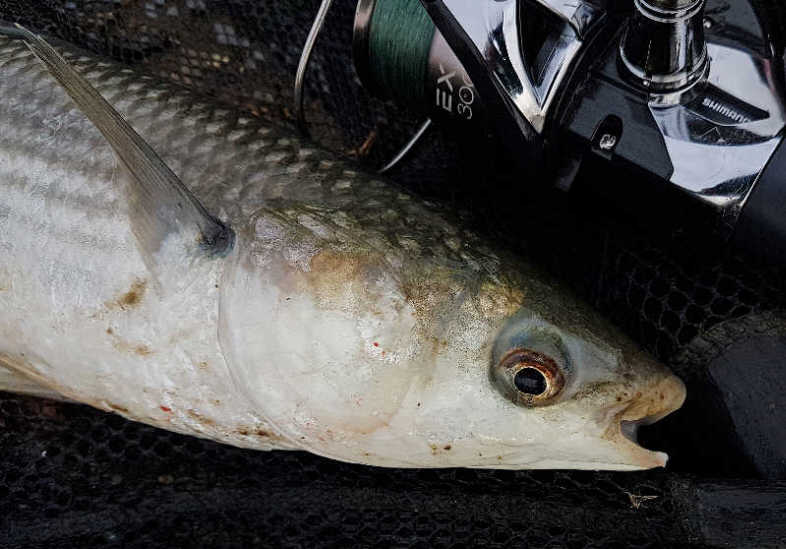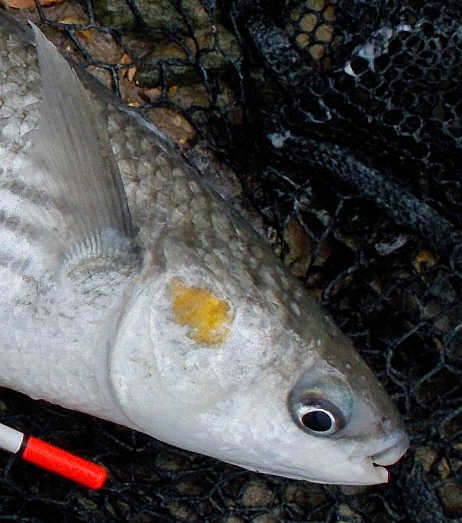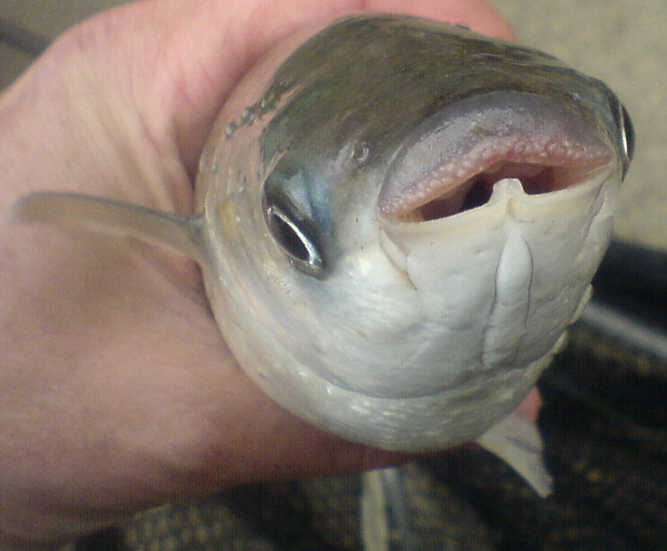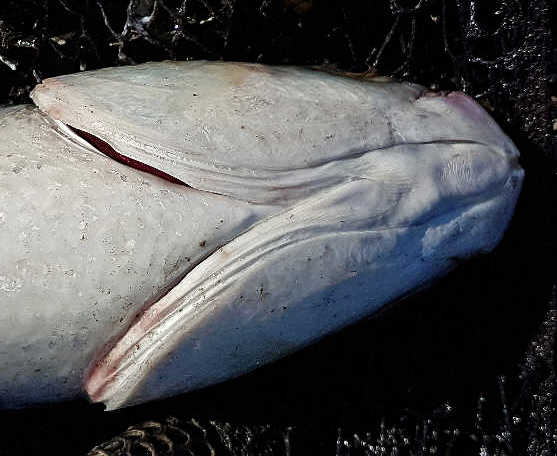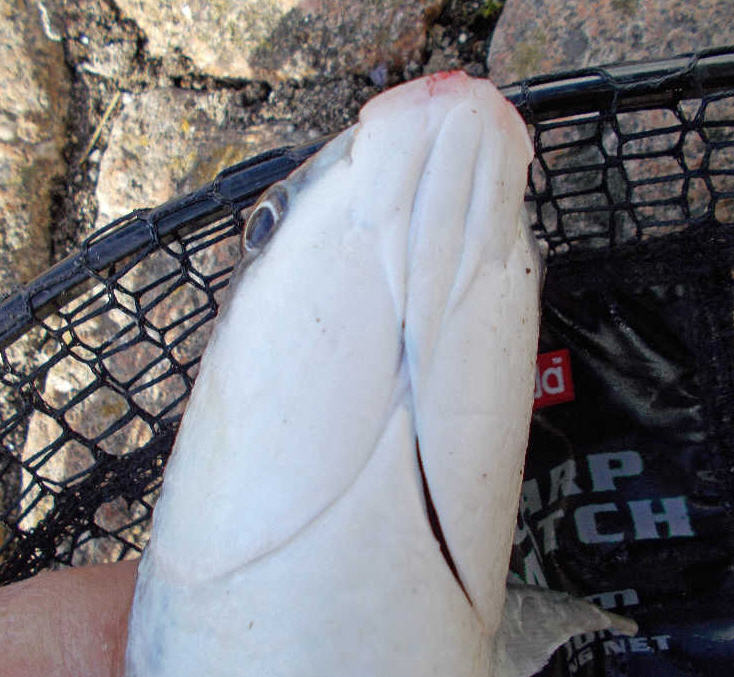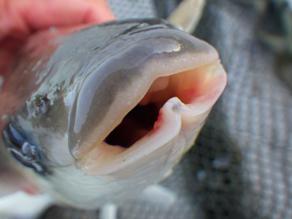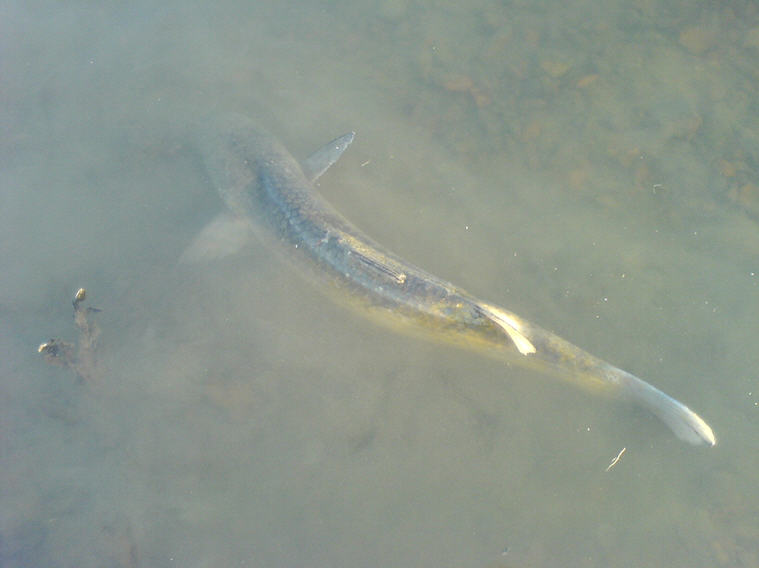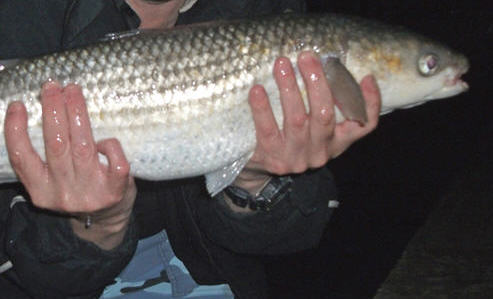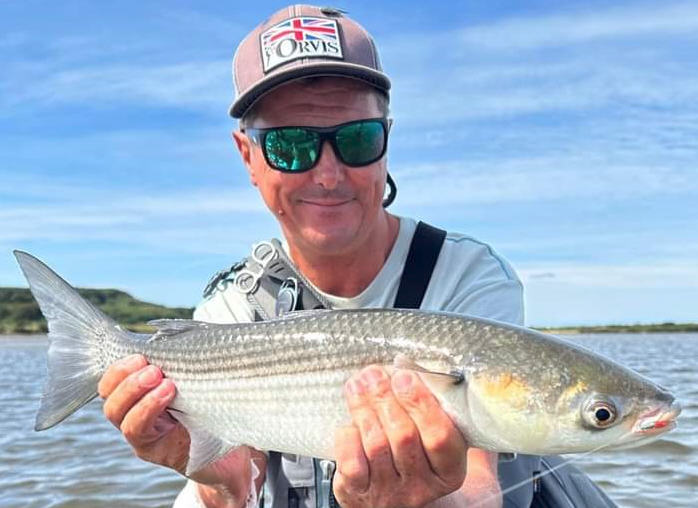Mullet Fishing: Species IDMullet Fishing: Species ID |
|
The following photos show some of the key features that can help to differentiate between the three UK mullet species. Please see also the Golden-Grey ID Supplement, if necessary. The following photos show some of the key features that can help to differentiate between the three UK mullet species. Please see also the Golden-Grey ID Supplement, if necessary. |
|
- there is a good deal of variation, particularly in thicklips |
|
Thicklip: |
Thinlip: |
|
Golden-Grey: Golden-Grey: | ||
|
- noticeably slimy, especially when out of the water for a while. Possibly less prone to shedding scales than the other two species - noticeably slimy, especially when out of the water for a while. Possibly less prone to shedding scales than the other two species |
|
|
||||
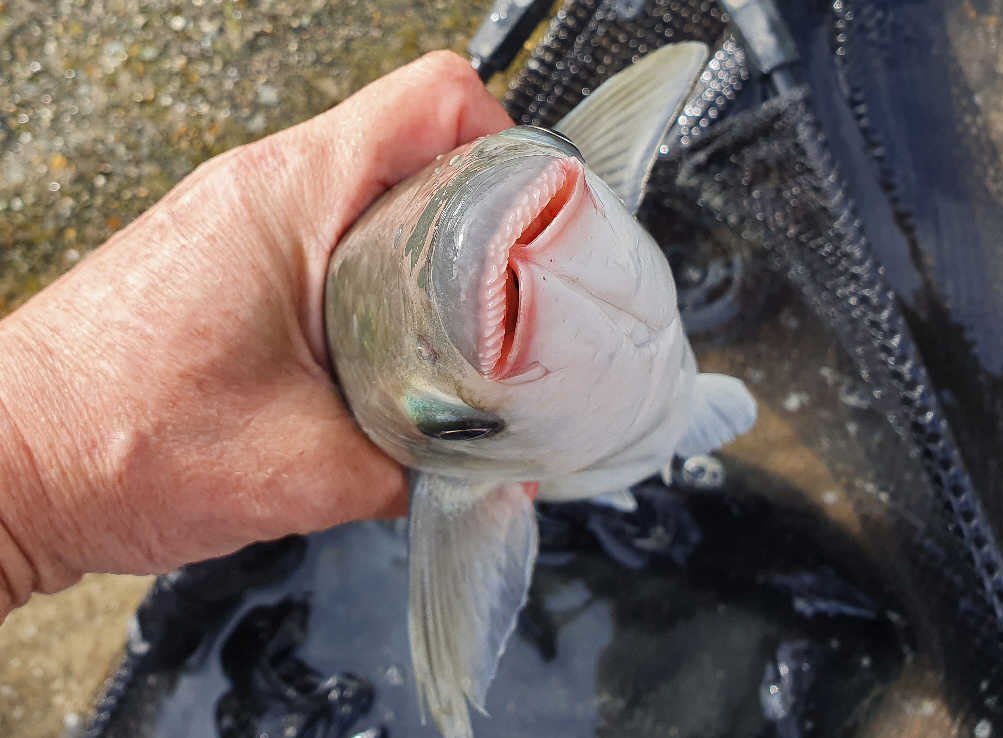
- note the papillae on the top lip, absent in the other two species, but usually present in thicklips |
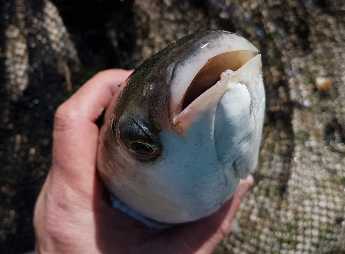
|
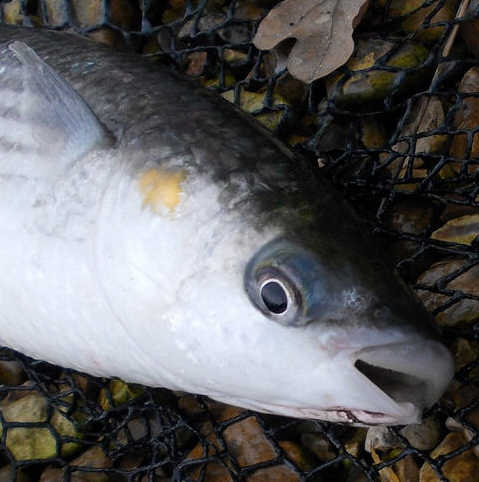
|

- note the papillae on the top lip, absent in the other two species, |

|

|
|
There are no teeth present |
Small teeth are said to be present |
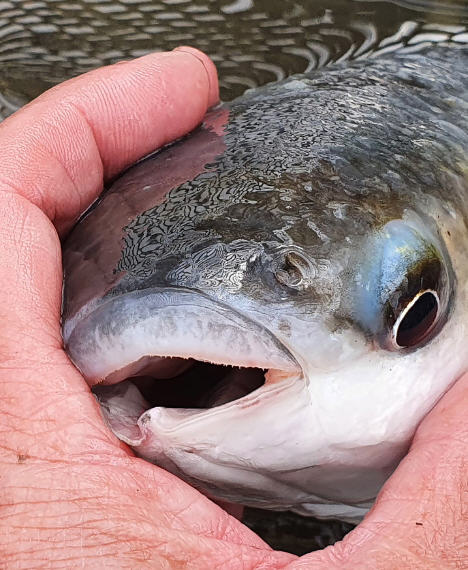
Small teeth are present on the upper lip in golden-greys |
|
There are no teeth present in thicklips |
Small teeth are said to be present in thinlips |

Small teeth are present on the upper |
|
|
|||
|
Thinlip; gold on gill cover: |
|
Please see also the National Mullet Club ID Guide |
|
Last updated 01.07.25 |

